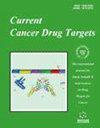Exploring the Antitumor Efficacy of PEGylated Liposomes Loaded with Licorice Extract for Cancer Therapy
IF 3.5
4区 医学
Q3 ONCOLOGY
引用次数: 0
Abstract
Background: Glycyrrhizic Acid (GA), a compound derived from licorice, has exhibited promising anticancer properties against several cancer types, including Prostate Cancer (PCa) and Gastric Cancer (GCa). Objective: This study has introduced a novel approach involving the encapsulation of GA and Licorice extract (Lic) into Polyethylene Glycol Liposomes (PEG-Lip) and assessed their efficacy against AGS (human gastric cancer) and PC-3 (human prostate cancer) cells, marking the first report of this endeavor. Methods: We synthesized GA-loaded PEG-Lip (GA PEG-Lip) and Lic-loaded PEG-Lip (Lic PEG-Lip) through the reverse-phase evaporation method. Results: Characterization of these liposomal formulations revealed their size, drug encapsulation, and loading efficiencies to be 110 ± 2.05 nm, 117 ± 1.24 nm; 61 ± 0.81%, 34 ± 0.47%; and 8 ± 0.41% and 4.6 ± 0.21%, respectively. Importantly, the process has retained the chemical structure of both GA and Lic. Furthermore, GA and Lic have been released from the PEG-Lip formulations in a controlled manner. In our experiments, both nanoformulations exhibited enhanced cytotoxic effects against AGS and PC-3 cells. Notably, GA PEG-Lip outperformed Lic PEG-Lip, reducing the viability of PC-3 and AGS cells by 12.5% and 15.9%, respectively. Conclusion: These results have been corroborated by apoptosis assays, which have demonstrated GA PEG-Lip and Lic PEG-Lip to induce stronger apoptotic effects compared to free GA and Lic on both PC-3 and AGS cells. This study has underscored the potential of encapsulating GA and Lic in PEG-Lip as a promising strategy to augment their anticancer efficacy against prostate and gastric cancers. conclusion: These results were corroborated by apoptosis assays, which demonstrated that GA PEG-Lip and Lic PEG-Lip induced stronger apoptotic effects compared to free GA and Lic on both PC-3 and AGS cells. This study underscores the potential of encapsulating GA and Lic in PEG-Lip as a promising strategy to augment their anticancer efficacy against prostate and gastric cancers. other: The research implications include: Advancement in cancer treatment, Overcoming the limitations of GA, innovation in drug delivery, contribution to nanomedicine探索载入甘草提取物的 PEG 化脂质体的抗肿瘤疗效
背景:甘草酸(GA)是从甘草中提取的一种化合物,对包括前列腺癌(PCa)和胃癌(GCa)在内的几种癌症具有良好的抗癌作用。研究目的本研究采用了一种新方法,将 GA 和甘草提取物(Lic)封装到聚乙二醇脂质体(PEG-Lip)中,并评估了它们对 AGS(人类胃癌)和 PC-3(人类前列腺癌)细胞的疗效,这是该方法的首次报道。研究方法我们通过反相蒸发法合成了GA负载的PEG-Lip(GA PEG-Lip)和Lic负载的PEG-Lip(Lic PEG-Lip)。结果:对这些脂质体制剂的表征显示,它们的尺寸、药物包封率和负载效率分别为 110 ± 2.05 nm、117 ± 1.24 nm;61 ± 0.81%、34 ± 0.47%;以及 8 ± 0.41% 和 4.6 ± 0.21%。重要的是,该工艺保留了 GA 和 Lic 的化学结构。此外,GA 和 Lic 还以可控的方式从 PEG-Lip 制剂中释放出来。在我们的实验中,两种纳米制剂对 AGS 和 PC-3 细胞的细胞毒性作用都有所增强。值得注意的是,GA PEG-Lip 的效果优于 Lic PEG-Lip,可使 PC-3 和 AGS 细胞的存活率分别降低 12.5% 和 15.9%。结论:凋亡检测证实了这些结果,与游离 GA 和 Lic 相比,GA PEG-Lip 和 Lic PEG-Lip 对 PC-3 和 AGS 细胞诱导的凋亡效应更强。这项研究强调了将 GA 和 Lic 包封在 PEG-Lip 中作为增强其对前列腺癌和胃癌抗癌功效的一种有前途的策略的潜力:这些结果得到了细胞凋亡实验的证实,实验表明,与游离 GA 和 Lic 相比,GA PEG-Lip 和 Lic PEG-Lip 对 PC-3 和 AGS 细胞诱导的凋亡效应更强。这项研究强调了将 GA 和 Lic 包封在 PEG-Lip 中作为增强其对前列腺癌和胃癌抗癌功效的一种有前途的策略的潜力:研究意义包括癌症治疗的进步、克服 GA 的局限性、药物输送的创新、对纳米医学的贡献
本文章由计算机程序翻译,如有差异,请以英文原文为准。
求助全文
约1分钟内获得全文
求助全文
来源期刊

Current cancer drug targets
医学-肿瘤学
CiteScore
5.40
自引率
0.00%
发文量
105
审稿时长
1 months
期刊介绍:
Current Cancer Drug Targets aims to cover all the latest and outstanding developments on the medicinal chemistry, pharmacology, molecular biology, genomics and biochemistry of contemporary molecular drug targets involved in cancer, e.g. disease specific proteins, receptors, enzymes and genes.
Current Cancer Drug Targets publishes original research articles, letters, reviews / mini-reviews, drug clinical trial studies and guest edited thematic issues written by leaders in the field covering a range of current topics on drug targets involved in cancer.
As the discovery, identification, characterization and validation of novel human drug targets for anti-cancer drug discovery continues to grow; this journal has become essential reading for all pharmaceutical scientists involved in drug discovery and development.
 求助内容:
求助内容: 应助结果提醒方式:
应助结果提醒方式:


